#Poor Fellow-Soldiers of Christ and of the Temple of Solomon
Explore tagged Tumblr posts
Text









The Construction of Rosslyn chapel began on 20th September 1456.
Properly known as the Collegiate Chapel of St Matthew in the village of Roslin, Midlothian, this is just a couple of miles from where I grew up.
The building of the chapel is sometimes incorrectly given as ten years before, but that date comes from the chapel’s receiving its founding charter from Rome.
We are very lucky that Rosslyn Chapel remains intact, as we see it today, you only have to look around Scotland at the ruins of our Abbeys destroyed during the Reformation, Rosslyn was closed from around 1560,The chapel’s altars were destroyed in 1592 but the main structure is thought to have survived and any real damage was avoided.
The chapel was built by The Sinclair family and has been linked with the Poor Fellow-Soldiers of Christ and of the Temple of Solomon, that’s the Knights Templar to you and I, the order was disbanded around 150 years before construction but symbols, such as the “Two riders on a single horse” that appear on the Seal of the Knights Templar, can be found on the building.
Rosslyn Chapel was constructed almost entirely in stone, with no structural timber except within the much later Victorian baptistery added to the west end of the chapel. The chapel is thought to be only part of what was intended to be a much larger church, and it exhibits immense historic, architectural and cultural value. The extent of carved stonework both internally and externally makes this little chapel truly unique. Though incomplete, it took around 40 years to build, and has the largest number of Green Man carvings of any medieval chapel in Europe.
The carvings of the chapel have been the subject of much speculation and conjecture, as Christian symbolism and other references are interspersed throughout the building. In 1630, Sir William Sinclair of Rosslyn was granted the charters from the Masons of Scotland, which confirms that the St Clairs were traditional Grand Masters of the Masons of Scotland. Accordingly, Rosslyn Chapel is of considerable interest to Masonic groups. Other carvings at Rosslyn Chapel are of religious, natural, or decorative nature, such as the Apprentice Pillar and the Seven Acts of Mercy panel.
Following the Reformation, services stopped being held in 1592 and did not begin again until the Chapel was re-dedicated in Victorian times.
Oliver Cromwell had his men stable their horses in the chapel in 1650 when he and General George Monck conquered nearby Roslin Castle.
Queen Victoria visited the site during her reign and was instrumental in restoring the Chapel to it’s original state for worship according to Protestant rites of the Scottish Episcopal Church and was re-dedicated as a place of worship on 22nd April 1862
I remember my mum talking about the Apprentice Pillar and how there was speculation that The Holy Grail is possibly encased within it, she talked about this in the 1970′s, about 30 years before the Chapel became more famous due to Dan Brown’s novel and film The Da Vinci Code.
I got the majority of the pics from the Alamy website, they date from the mid 19the century, some are from around 1852 while the one with the two figures walking through the church is from a book printed in 1859. Note most of these are before Queen Victoria's visit, so it shows the building was still in a good state of repair then. The top pic is from John Slezer's 'Theatrum Scotiae' is an important record of Scottish towns, castles and palaces in the 17th century. For most of these places, it contains some of the earliest views that survive. The first edition was 1693 so I think I am safe in saying it is the oldest depiction of Rosslyn Chapel.
Theatrum Scotiae also included written information on the drawings featured, the noted Scottish physician and antiquarian Robert Sibbald wrote;
Rosslyn Chapel
To the Right Honourable GEORGE Earl of Caithness, Lord Biridall, &c.
Roslin Chapel
This Chapel lies in Mid-Lothian, Four Miles from Edinburgh, and is one of the most curious Pieces of Workman-ship in Europe. The Foundation of this rare Building was laid Anno 1440 by William St Clair, Prince of Orkney, Duke of Holdenburgh, &c. A Man as considerable for the publick Works which he erected, as for the Lands which he possess'd, and the Honours which were conferred upon him by several of the greatest Princes of Europe. It is remarkable that in all this Work there are not two Cuts of one fort. The most curious Part of the Building is the Vault of the Quire, and that which is called the Prince's Pillar so much talk'd of. This Chapel was possess'd by a Provost, and Seven Cannons Regular, who were endued with several considerable Revenues through the Liberality of the Lairds of Roslin.
Here lies buried George Earl of Caithness, who lived about the Beginning of the Reformation, Alexander Earl of Sutherland, great Grand-Child to King Robert de Bruce, Three Earls of Orkney, and Nine Barons of Roslin.
The last lay in a Vault, so dry that their Bodies have been found intire after Fourscore Years, and as fresh as when they were first buried. There goes a Tradition, That before the Death of any of the Family of Roslin, this Chapel appears all in Fire.
27 notes
·
View notes
Note
Daenerys is the Prince that was Promised. When she visits the House of the Undying, she is told she is the child of three, which relates to the three heads of the Dragon. And the child of three/three heads of the Dragon means she is the Prince that was Promised, the Stallion who Mounts the World, Azor Ahai. They are all myths retelling the same story, just in a different cultural lens.
People forget that Martin’s subversion of the Chosen One trope is based on 90s fantasy...which was overwhelmingly male characters and candidates, perhaps the most significant at the time being Rand al’Thor of the late Robert Jordan’s Wheel of Time series. No one would expect, at the time, that the Prince that was Promised would be a princess. Most would have argued, as a significant portion of the fandom does till this day, that it is Jon, the standard male hero character. Jon being the Prince that was Promise would be a trope in of itself. Since we have gone beyond 90s fantasies, there have been more female chosen ones (Daenerys paved the way), but she still resides in that 90’s concept of a female Chosen One. (Also ignoring the obvious Jesus parallels such as her walk through the desert, her being born of fire, Bonfier Hasty worshiping the Maiden because of his love for Rhaella, etc).
I note as much ("They are all myths retelling the same story, just in a different cultural lens.") HERE. branwyn-the-half-witch has an interesting thought that that particular title accidentally developed from Aegon seeing a Targ from his own blood ("prince") be needed ("promised") for a future fight HERE.
Which justifies how the TPTWP title/meaning exists in Westeros; no other Westerosi (maester or otherwise) really spoke of it before Stannis, who of course received such from Melisandre and more a restored-but-half-realized knowledge of the original Essoi mythic body of a savior. Said "restored" because the Targs have been isolated from or cut themselves from Essos but were still magically/by blood connected to it...bc their very blood is that source for those dragon dreams.
(Ironically, the Seven faith--meant to mimic Catholicsm and the Catholic Church in its:
dogma
that dogma's rigidity's influence over the whole of Westeros' society (chivalry/warriordom; mores on hierarchy and obedience, childrearing/corporal punishment, the self-mortification of the carving stars in one's forehead [though this is present in many real-world religions and sects, in the West its immediately recognized and associated with Christian self flagellation])
the multiplicity of many aspects of one god, the aesthetics of stained windows or multicolored glass/translucent substances inlaid or making up part of a geometric, architectural structure [not just buildings but crowns of the high Septon and Aenys I]
the structure of High Septon, septons, and septas mirroring Pope, priests/deacons/measters-monks/nuns
the HS/Pope's relationship with monarchs as to sometimes affirm and sometimes condemn and be some sort of religious "check" but also support for the monarchy
"holy days"
the Knights Templar (who were aka "The Poor Fellow-Soldiers of Christ and of the Temple of Solomon") & crusaders inspiring the Poor Fellows & the Warrior's Sons
*EDIT* some rituals, as well
has no element of a Christ-like or a generally mythic savior figure in its mythos. The none Catholic/Seven faiths [except the old gods, but even here there is a hint of a need for saving against the Long night but its just so decreased bc of te nearly lost greenseers and twstsote and the giants] all have this focus on a savior figure instead.)
#asoiaf asks to me#daenerys stormborn's characterization#daenerys stormborn#daenerys targaryen#agot characterization#the prince that was promised#asoiaf religion#aegon's prophecy#asoiaf prophecies#asoiaf mythology#asoiaf writing#faith of the seven#asoiaf#agot
11 notes
·
View notes
Photo
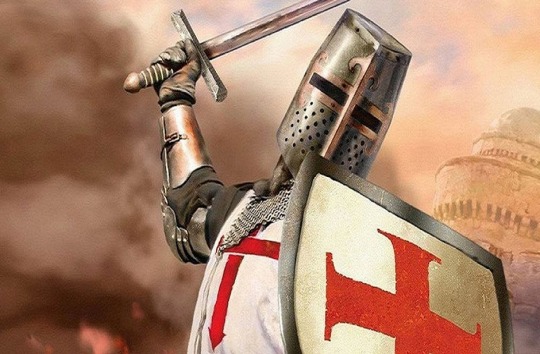
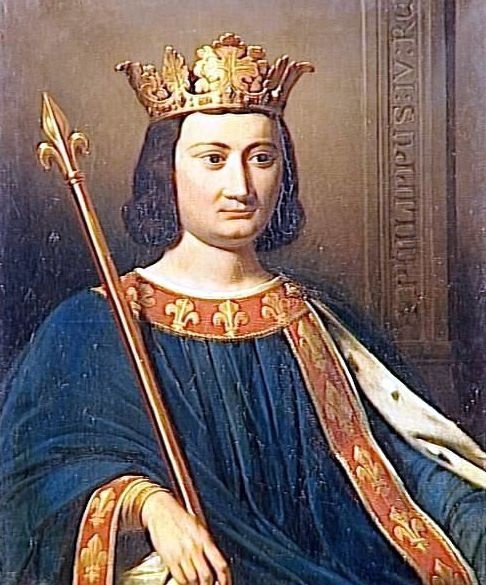
Why did the Templars just disappear in the early Middle Ages when they were so powerful?
They didn’t disappear. They were purged.
Most of them, anyway. Think Order 66 with swords.
But in order to understand why the Knights Templar were rounded up on Friday the 13th, 1307, you need to understand the context of the time in which it happened. Several factors contributed to the fall of the Templars, but the biggest one was this guy:

This is Philip IV, King of France, who ruled from 1285 until his death in 1314. He was the main architect in the fall of the Templars—but I’m getting ahead of myself.
The fall of the Knights Templar was set in motion when the Siege of Acre ended in 1291. When it fell to the Mamluk forces, it marked the loss of the entire Holy Land for Christendom. Acre had been the last piece of territory in the Holy Land held by Christians, so its fall was a grievous blow to Europe. It was an unmitigated disaster.
That’s where the Templars come in.
The Poor Fellow-Soldiers of Christ and the Temple of Solomon, or Templars for short, were originally established after the Crusaders captured Jerusalem at the end of the First Crusade. Their mission was to guide and protect pilgrims on the road to the holy city, as traveling in those days was fraught with peril. Those who joined the order in those early days took vows of poverty, chastity, piety and obedience, and their sigil even showed two men riding on the same horse to emphasize the Templars’ rejection of worldly goods.
Their self-imposed poverty didn’t last long, however. The Templars soon found a powerful advocate in a priest named Bernard of Clairvaux, who wielded a great of amount of influence in the Catholic Church. Clairvaux was so psyched about the Templars that he wrote books talking about how awesome they were, and this got everybody so pumped that in 1189 Pope Innocent II issued a papal bull saying that the Templars were exempted from paying taxes to anyone and didn’t have to obey local laws or customs. Instead, the Templars would answer only to the Pope himself. With this kind of public prestige, the Knights Templar soon became a popular charity: powerful lords and peasants alike donated their money, businesses, and even vast tracts of land to their cause, and sons from noble families from across Europe clamored to join them.
The Order quickly grew to be one of the most powerful military and financial institutions in Europe. They achieved famous victories such as the Battle of Montgisard in 1177, when some 500 Templar knights, backed up by a force of only several thousand foot soldiers, took on more than 26,000 enemy soldiers and absolutely crushed them. At the height of their power, the Templars were so rich and so powerful that even the crowned heads of Europe didn’t want to cross them. They controlled vast tracts of land throughout Europe and the Middle East, built massive cathedrals and castles, and were heavily involved in manufacturing as well as imports and exports, which is why they controlled a large fleet of trading ships and an even larger navy. They even set up an early kind of banking system and bought the whole freaking island of Cyprus.
A century after their founding, the Templars had become an independent state in all but name. Some historians have even called them the first true multinational corporation.
But when Acre fell and the Christians lost their grip on the Holy Land, the Templars lost their reason for being. Even as they grew in power they never neglected their original purpose of protecting pilgrims on the road to Jerusalem. But now that the Holy Land was lost, there weren’t any pilgrims to protect. The loss of the Holy Land also did a lot to diminish their reputation in the eyes of peasants and nobles alike, some of whom even blamed them for the catastrophe that Christendom had suffered. Public support for the order began to wane.
I mean, imagine that you’re a European king or feudal lord for a just second. The Templars have returned to Europe in the aftermath of the Third Crusade. Maybe they’re even travelling through your land. They’ve got a massive army, a massive navy, they don’t pay taxes, they’re richer than sin, and they can do pretty much whatever the hell they want because the laws literally don’t apply to them. The only person with the authority to command the Templars to do anything is the Pope, and Rome’s a long way away. If they decide to camp outside your castle and eat your food and drink your wine for three weeks as your “guests,” there’s nothing you can do about it. The idea of such a powerful force with so little accountability would have made you pretty uneasy. And the Templars themselves did little to relieve that anxiety. Many of them could, and did, take full advantage of their immunity to local laws and customs. The phrase “drunk as a Templar” became popular for a reason. To be sure, all this might have been more easily borne before the tide of the Crusades turned against the Crusaders, but now these jokers are walking around all lordly-wise and they’re not even winning anymore. All of this made a lot of very powerful people very nervous and increasingly disgruntled.
The point I’m trying to get at here is that the Templars were already having some serious PR issues even before Philip IV of France came along. Speaking of which…
See, Philip IV came to the French throne in 1285, and by 1303 he found himself and his kingdom deeply in debt after several failed—and very expensive—military campaigns. King Phil couldn’t afford to pay for all that on his own, so he went to the only people in Europe who could loan him the cash he needed. Those people—you guessed it—were the Templars, and he opened a huge tab with them that only got larger with time. And since King Philip seems to have had the financial acumen of a freaking goldfish, it didn’t take long for him to bring his kingdom into dire straits.
Now, Philip shared many of the same concerns about the Templars as his contemporaries, but he was probably much more worried about how much money he owed them. He may have even feared that the Knights would try to overthrow him if he wasn’t able to pay them back—and he damn sure wasn’t able to pay them back, not after borrowing such enormous sums.
In short, all of his biggest headaches seemed to trace back to the Templars. So what did he decide to do?
Get rid of the Templars, of course. By destroying them, he could eliminate a potential threat to his authority, wipe out his debt, and replenish his kingdom’s coffers all in one fell swoop.
But the Templars were traditionally protected by the Pope, so Philip IV’s first task was to remove their shield of papal authority. He did this by committing an act almost as audacious as his persecution of the Templars: stacking the papacy. Here is when we first see his Machiavellian brilliance on full display, for it was through this web of machinations—which included bribery, intimidation, and even violence—that he was able to get a puppet Pope, Clement V, installed in the Vatican. Clement issued the edicts, but it was Philip who pulled his strings. The King of France now had de facto control over the Catholic Church, and he used that control to have Pope Clement draw up a long list of charges against the Templars. These included blasphemy, heresy, sodomy, idol-worship and even witchcraft. He also accused the Templars of performing obscene rites in their initiation ceremonies, which was a clever charge to make because the Templars kept the details of those ceremonies a closely-guarded secret. No one knew what those ceremonies entailed, and the Templars were forbidden by oath from discussing them with outsiders, so they couldn’t really refute the charges against them.
Needless to say, few historians take these any of these accusations seriously. They were almost certainly fabrications concocted by the king himself.
Next, Philip lured all the Templar leaders to France on a pretext. He claimed that he wanted to discuss merging them with another knightly order, the Knights Hospitaller. All the most powerful Templars heeded his call and came to France. Many were accompanied by lavish baggage trains, which Philip was no doubt counting on. He then issued secret instructions to all his officials in every city and town where the Templars were staying. So did Pope Clement, at Philip’s behest.
In other words, these orders were sent out not just across France but across Europe, to every village, city, castle and keep with a Templar presence. It was received by princes, judges and civil officials in Spain, England, Germany and Cyprus. But no matter who they were sent to, the orders were the same:
At daybreak on Friday the 13th of October, 1307, every Templar in sight was to be arrested. Nothing was to be said to anyone about the raid before it happened, on pain of death if the plot was given away.
The plan went off like clockwork. It took the Templars completely by surprise. At dawn on the appointed day, they suddenly found themselves under attack all over the Continent. Some managed to escape, but many of them were rounded up and imprisoned or killed. Those unlucky enough to be captured, including their Grand Master Jacques du Molay, were tortured until they confessed to the trumped-up charges that had been leveled against them. Many of them died from this terrible treatment or were burned at the stake, and Pope Clement officially dissolved the Knights Templar several years later. Du Molay himself was eventually burned at the stake along with many of his comrades.
But the immense wealth that Philip had planned on seizing never materialized. The vast treasure the Templars brought with them to France was never recovered, and no one knows what happened to it. We do know that a Templar fleet of more than twenty vessels was anchored in the French city of La Rochelle before the purge and vanished overnight shortly after it began, but no one knows where it went. Some believe that the Templars used those ships smuggle their treasure out of France just in the nick of time, but there’s no way to know for certain. And even if they did, the treasure is just as lost to us today as it would have been had it stayed in France.
Nor does anyone know for certain what happened to the Templars who were lucky enough to survive the purge. Some of them no doubt faded into the background or lived the rest of their lives in hiding. Others may have vanished into the ranks of the Knights Hospitaller. A lucky few might have been able to bribe or plead enough for clemency if they were caught.
There are stories, though. One of the most persistent legends says that some of the remaining Templars managed to make it to Scotland, where they later fought for Robert the Bruce at the Battle of Bannockburn in 1314. The Templars had strong connections with Scotland that dated back for more than a century, and Robert had little reason to honor the papal decree to purge the Templars. The pope had excommunicated him and his entire country after he murdered one of his rivals, John Comyn, inside a church on February 10, 1306, and now the King of Scots was fighting a brutal war against the English. If the Templars did indeed show up on his doorstep, he would have been happy to have such experienced and fearsome warriors on his side. But to date, no solid evidence has been found to give this theory credence.
Another legend—and my personal favorite—claims that some of the Templars fled to the Swiss Alps. In fact, there are stories in Switzerland even today of “armed white knights” who helped the Swiss crush an invasion by Duke Leopold of Hapsburg in 1315, just a few years after the purge. Could these “white knights” have been Templars? If they were, they picked a perfect spot. The Swiss Alps are formidable even with today’s technology, so they would have been an ideal location to hide in. They would also have been a great place for the Templars to put their expertise to good use. In fact, some claim that these fugitive Templars trained the very first Swiss pikemen, who went on to win renown as the most fearsome fighters in Europe. It is, after all, fairly remarkable how quickly the Swiss, who had been simple subsistence farmers for centuries before Duke Leopold’s invasion, became some of the finest warriors of their day. The story even goes so far as to claim that the Templars also taught the Swiss their secrets of banking and finance, and that those same secrets eventually evolved into the unique banking system still used in Switzerland today.
But by far the most fantastical—and least likely—story says that a group of Templars fled to North America, and that they used old maritime routes first pioneered by the Vikings centuries earlier to island-hop across the North Atlantic until they landed somewhere along the upper northeastern seaboard. Few historians take this assertion seriously, however, as there is almost no archaeological evidence to back it up.
Ultimately, as with the final destination of their fabled wealth, the true fate of the last Templars will likely never be known.
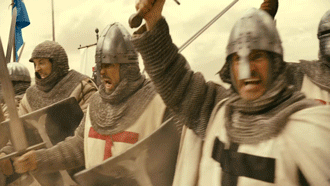
#philp iv#kemetic dreams#templars#knight templar#switzerland#north america#duke leopold#english#duke#john comyn#scotland#europeans#european history#philip iv
51 notes
·
View notes
Text
When you're being shamed by a history documentary:
"They were originally called 'The Poor Fellows' Soldiers of Christ and of the Temple of Solomon', which thankfully has been shortened to 'the Knights Templar.' Or, for the really lazy, just 'Templars.'"
youtube
2 notes
·
View notes
Text
04 works, PORTRAIT OF A LADY, Ana Dias's Bedouin Desert Warriors, with Footnotes, #237
Felix LabisseThe Templars, c. 1973Color lithograph on Arches75,5 x 56 cmPrivate collection The Poor Fellow-Soldiers of Christ and of the Temple of Solomon, mainly known as the Knights Templar, was a French military order of the Catholic faith… Please follow link for full post

View On WordPress
#Art#Artists#Biography#Colorful#Feminine#Fine Art#footnotes#History#Painting#PORTRAITOFALADY#Templars#Woman#Zaidan#Zenobia
1 note
·
View note
Photo

The Poor Fellow-Soldiers of Christ and of the Temple of Solomon (Latin: Pauperes commilitones Christi Templique Salomonici), also known as the Order of Solomon's Temple, the Knights Templar, or simply the Templars, was a Catholic military order, one of the most wealthy and popular military orders in Western Christianity. They were founded in 1119, headquartered on the Temple Mount in Jerusalem, and existed for nearly two centuries during the Middle Ages.
Officially endorsed by the Roman Catholic Church by such decrees as the papal bull Omne datum optimum of Pope Innocent II, the Templars became a favored charity throughout Christendom and grew rapidly in membership and power. Templar knights, in their distinctive white mantles with a red cross, were amongst the most skilled fighting units of the Crusades. They were prominent in Christian finance; non-combatant members of the order, who made up as much as 90% of their members,[2][3] managed a large economic infrastructure throughout Christendom.[4] They developed innovative financial techniques that were an early form of banking,[5][6] building a network of nearly 1,000 commanderies and fortifications across Europe and the Holy Land, and arguably forming the world's first multinational corporation.[7]
The Templars were closely tied to the Crusades; as they became unable to secure their holdings in the Holy Land, support for the order faded.[8] Rumours about the Templars' secret initiation ceremony created distrust, and King Philip IV of France, while being deeply in debt to the order, used this distrust to take advantage of the situation. In 1307, he pressured Pope Clement to have many of the order's members in France arrested, tortured into giving false confessions, and then burned at the stake.[9] Under further pressure, Pope Clement V disbanded the order in 1312.[10] The abrupt disappearance of a major part of the medieval European infrastructure gave rise to speculation and legends, which have kept the "Templar" name alive into the present day.
https://en.wikipedia.org/wiki/Knights_Templar
0 notes
Text
0 notes
Photo

“An investigation into the real historical figure of King David and the real location of the Temple of Solomon • Identifies King David as Pharaoh Tuthmosis III of the 18th Dynasty and David’s son Solomon as Pharaoh Amenhotep, Tuthmosis’s successor • Shows how the Temple of Solomon described in the Bible corresponds with the Mortuary Temple of Luxor in Egypt • Explains how David was not a descendant of Isaac but his father and how biblical narrators changed the original story of Abraham and Isaac to hide his Egyptian identity During the last two centuries, thousands of ancient documents from different sites in the Middle East have been uncovered. However, no archaeological discovery speaks of King David or Solomon, his son and successor, directly or in directly. Was King David a real person or a legend like King Arthur? Proposing that David was a genuine historical figure, Ahmed Osman explores how his identity may be radically different than what is described in religious texts. Drawing on recent archaeological, historical, and biblical evidence from Egypt, Osman shows that David lived in Thebes, Egypt, rather than Jerusalem; that he lived five centuries earlier than previously thought, during the 15th rather than the 10th century B.C.; and that David was not a descendant of Isaac but was, in fact, Isaac’s father. The author also reveals David’s true Egyptian identity: Pharaoh Tuthmosis III of the 18th Dynasty. Confirming evidence from rabbinic literature that indicates Isaac was not Abraham’s son, despite the version provided in Genesis, Osman demonstrates how biblical narrators replaced David with Abraham the Hebrew to hide the Egyptian identity of Isaac’s father. He shows how Egyptian historical and archaeological sources depict figures that match David’s and Solomon’s known characteristics in many ways, including accounts of a great empire between the Euphrates and the Nile that corresponds with David’s empire as described in the Bible. Extending his research further, the author shows that King Solomon, King David’s son, corresponds in reality to Pharaoh Amenhotep, successor of Tuthmosis III, the pharaoh who stands out in the dynastic history of Egypt not only for his peaceful reign but also as the builder of the Temple of Luxor and the famed Mortuary Temple at Luxor, which matches the biblical descriptions of Solomon’s Temple. Unveiling the real history behind the biblical story of King David, Osman reveals that the great ancestor of the Israelites was, in fact, Egyptian.”
#books#egyptian mysticism#ancient egypt#babylonian esotericism#judaism#The Shasu of YHWH#Yahu in the land of Shasu#King David#egyptology#tetragrammaton#Tuthmosis III#Amenhotep#solomon#temple#temple of solomon#seal of solomon#children of solomon#Poor Fellow-Soldiers of Christ and of the Temple of Solomon#sufism#sufi#Egypt#buddhism#early christianity#Christianity#Chrisos#Christ#lost keys of freemasonry#Israel#Israelites#cornerstone
136 notes
·
View notes
Note
ur url just reminded me that i keep getting recommended this one blog and in this lady's bio yk what she fuciin has? you know what she is? an EX-TEMPLAR. in two-thousand and twenty one year of our Lorde. like completely casually. and she just never felt the need to address it beyond that either. like its just casual trivia. yk. likes lizzo, favorite color is red, former member of a medieval order of catholic crusader knights, likes her toast a little burnt, just little things yk? and every time i see it i shake in my little muslim-taught boots.
ive been trying to figure out what to say to this and i cant
im laughing so much im sorry for that op, my url is a character from the wooden overcoats podcast and also i had no idea what a templar was to begin with bc i dont know anything about christianity
#i was raised theravada buddhist#i googled what a templar was and im even more confused now#like i dont know what ANY of these words mean#wtf is The Poor Fellow-Soldiers of Christ and of the Temple of Solomon#i copied that from wikipedia#SORRY#tht blog owner sounds like...quite the character tho#templar.txt#WAIT HOLD ON I KNOW VAGUELY ABOUT THE CRUSADES#ok. yeah thats WEIRD#i promise im normal
5 notes
·
View notes
Photo


Repose en paix, Geoffroi de Charney and Jacques de Molay. De Charney, Preceptor of Normandy for the Knights Templar, and de Molay, Grand Master of the Knights Templar, were both (along with many other Templars and order members) executed on this date in 1314, the last remnants of the military order leadership still standing. Originally banded to fight in the Crusades (or rather, ostensibly to protect Christian pilgrims in the Holy Land), the Templars amassed a huge fortune in the 12th and 13th Centuries--one of the primary reasons for their forceful dissolution by order of Pope Clement V (on, it should be noted, Friday, October 13, 1307--a possible origin of the dread engendered by Friday the Thirteenth), and their grisly end (most of them were burned at the stake) by French King Philip IV. The knights who survived the purge were absorbed into other, competing military orders, but the legend of the Knights Templar continues, with the temerity most legends do--bolstered by the fact that De Molay was recorded as cursing both the pope and the king as the flames engulfed him. And wouldn’t you know it, the pope died the following month and the king didn’t last out the year.
Stamp details: Stamp on top: Issued on: September 30, 2008 From: Sofia, Bulgaria MC #4867
Stamp on bottom: Issued on: March 22, 2012 From: Sofia, Bulgaria MC #5027
#Geoffroi de Charney#Jacques de Molay#Knights Templar#Poor Fellow-Soldiers of Christ and of the Temple of Solomon#Pauperes commilitones Christi Templique Salomonici#Order of Solomon's Temple#Ordre du Temple#Templiers#فرسان الهيكل#Templars#crusades#bulgaria#stamps#philately#march 18#България
2 notes
·
View notes
Text

A traditional Catholic Server that's in full communion with Rome. And also one of its kind.
§︱Amazing Resouces! Most are FREE
・Lists of free Resources, Library of Books, Tradition Essays & The Catechism w/ Theological commentary (In Progress)
§︱Everything TLM! 3 Daily TLM Pings
・The Readings, Lives Of The Saints & the Holy Mass itself. The Mass ping is early which is perfect for those near Australia or in later time zones
§︱Never stop praying! Devotional Services
・A service of the Most Holy Rosary or novena will be held depending on the hosts
§︱Let's have fun! 3 Bot Games
・EPIC RPG, Piggy & Ultimate RPG
§︱Let's partnered up! Open For Catholics
・If you're not looking to partner with a Catholic server but just a "Christian" one, please make a ticket and we'll discuss the partnership
§︱Aesthetic Format
・We don't mean to brag but it's the only one of its kind... :)
§︱Deus Vult! Templar rankings
・After every 10 levels, you'll obtained a rank


In the Essays on Tradition, we do no provide a taste of traditional values with obvious heretical views
We are called The Order of Christ or better known as Knights Templar. But because the name has been taken too common among secular servers, we shall be called Christlar or Knights Christlar. This name fits perfectly to us because we have hope and trust in Our Lord & Saviour Jesus Christ.
#catholicism#catholic#discord server#discord#crusader#Knights Templar#templar#Catholic Discord#Order of Solomon's Temple#The Poor Fellow-Soldiers of Christ and of the Temple of Solomon
1 note
·
View note
Text
Female Knights in Medieval History
While women have been fighting alongside men for all of history, they usually don't get the same recognition as their counterparts. Here are some cases where women did get accepted into chivalric orders, though they typically got a separate title. Some of the women were combatants, and some were not (but non-combatant men have been accepted in chivalric orders for just as long!)
Order of the Hatchet (12th century Spain) Orde de l'Atxa|Orden del Hacha was an entirely-female order created after women defended the Catalonian town of Tortosa from invaders. With most adult men off to war, the women fought with hatchets and other tools. Women of this order were given social and financial privileges, including tax exemptions.
Order of Saint-John (12th century Malta) A military religious order, the Order of Saint-John had female soeurs hospitalières and male frères prêtres who had essentially the same role in the order.
Teutonic Order (12th century Jerusalem) The Order of Brothers of the German House of Saint Mary in Jerusalem accepted women primarily as consorores and hospitallers, in charge of supportive and medical services. However, these women did follow men to war to perform battlefield medicine.
Knights Templar (12th-14th century Jerusalem) The members of the Poor Fellow-Soldiers of Christ and of the Temple of Solomon admitted women for a number of roles. We know that when the final got around to writing down their rules, it included continuing the already standard practice of admitting women. Most Knights Templar were noncombatant, especially financiers.
Order of the Garter (14th-15th century England) Dedicated to the patron saint of England, Saint George, the Most Noble Order of the Garter admitted women regularly, often due to blue blood. However, women without high birth were admitted as well.
Order of the Ermine (14th and 15th century France) The L'Ordre de l'Hermine was directly inspired by the Order of the Garter and dedicated to upholding one's personal honor. It openly admitted men and women of any social rank, including the only known instance in Medieval history of a woman serving as Officer of Arms. This woman, Katherine Potier, was titled "Espy Herault".
Order of the Blessed Virgin Mary (13th-16th century Italy) A unique order that took up arms to pacify cities in the fractured Italian states. It was centered in Bologna and would admit women as fighters called militissa (literally 'female knight').
#history#world history#badass women#knights#women in history#warrior women#spain#france#italy#england#europe#jerusalem#israel#crusades#catholic church#female knights#medieval#medieval europe#medieval history
4K notes
·
View notes
Text

The Poor Fellow-Soldiers of Christ and of the Temple of Solomon, mainly known as the Knights Templar, was a French military order of the Catholic faith…
Please follow link for full post
Zenobia,Art,Colorful,fine art,History,Feminine,PORTRAITOFALADY,Zaidan,painting,FOOTNOTES,Biography,Woman,Artists,Templars,
04 works, PORTRAIT OF A LADY, Ana Dias's Bedouin Desert Warriors, with Footnotes, #237
#PORTRAITOFALADY#painting#Zaidan#Art#biography#Artists#History#FOOTNOTE#Woman#Colorful#Feminine#fineart#Zenobia#Templars
0 notes
Photo
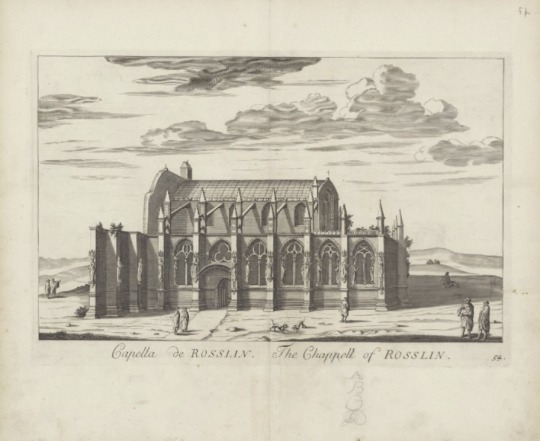
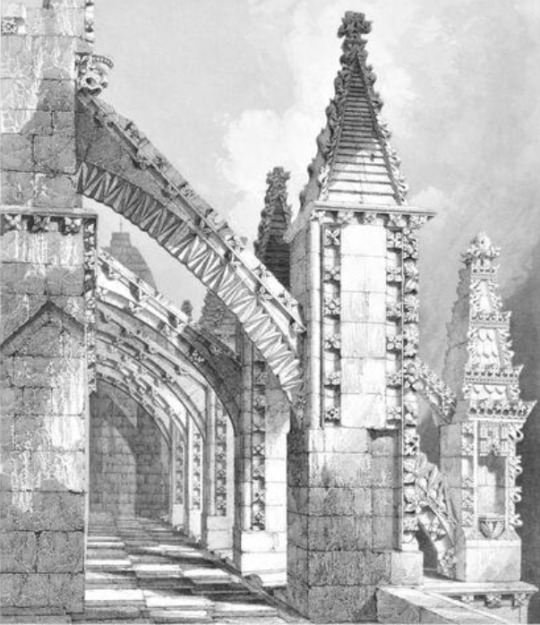




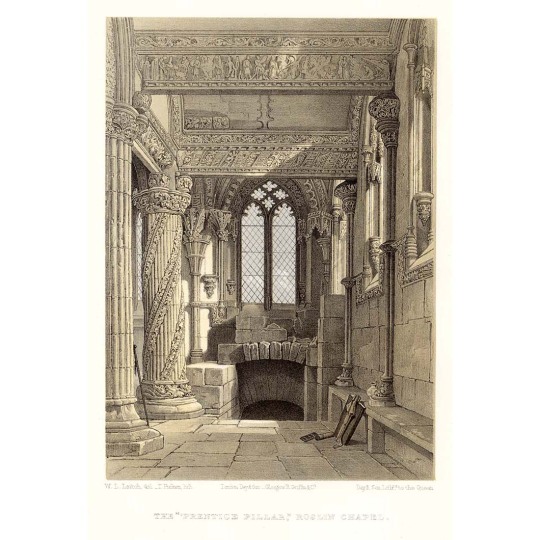
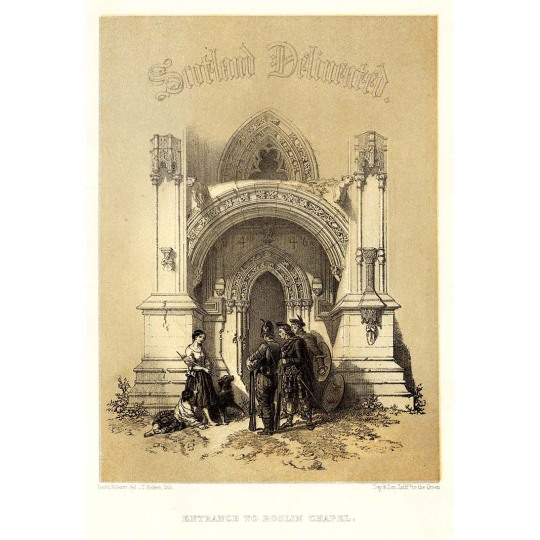
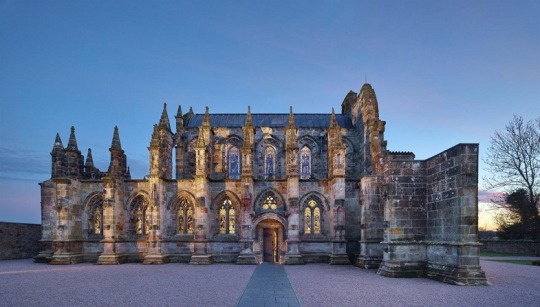
The Construction of Rosslyn chapel began on 20th September 1456.
Properly known as the Collegiate Chapel of St Matthew in the village of Roslin, Midlothian, this is just a couple of miles from where I grew up.
The building of the chapel is sometimes incorrectly given as ten years before, but that date comes from the chapel’s receiving its founding charter from Rome.
We are very lucky that Rosslyn Chapel remains intact, as we see it today, you only have to look around Scotland at the ruins of our Abbeys destroyed during the Reformation, Rosslyn was closed from around 1560,The chapel’s altars were destroyed in 1592 but the main structure is thought to have survived and any real damage was avoided.
The chapel was built by The Sinclair family and has been linked with the Poor Fellow-Soldiers of Christ and of the Temple of Solomon, that’s the Knights Templar to you and I, the order was disbanded around 150 years before construction but symbols, such as the “Two riders on a single horse” that appear on the Seal of the Knights Templar, can be found on the building.
Rosslyn Chapel was constructed almost entirely in stone, with no structural timber except within the much later Victorian baptistery added to the west end of the chapel. The chapel is thought to be only part of what was intended to be a much larger church, and it exhibits immense historic, architectural and cultural value. The extent of carved stonework both internally and externally makes this little chapel truly unique. Though incomplete, it took around 40 years to build, and has the largest number of Green Man carvings of any medieval chapel in Europe.
The carvings of the chapel have been the subject of much speculation and conjecture, as Christian symbolism and other references are interspersed throughout the building. In 1630, Sir William Sinclair of Rosslyn was granted the charters from the Masons of Scotland, which confirms that the St Clairs were traditional Grand Masters of the Masons of Scotland. Accordingly, Rosslyn Chapel is of considerable interest to Masonic groups. Other carvings at Rosslyn Chapel are of religious, natural, or decorative nature, such as the Apprentice Pillar and the Seven Acts of Mercy panel.
Following the Reformation, services stopped being held in 1592 and did not begin again until the Chapel was re-dedicated in Victorian times.
Oliver Cromwell had his men stable their horses in the chapel in 1650 when he and General George Monck conquered nearby Roslin Castle.
Queen Victoria visited the site during her reign and was instrumental in restoring the Chapel to it’s original state for worship according to Protestant rites of the Scottish Episcopal Church and was re-dedicated as a place of worship on 22nd April 1862
I remember my mum talking about the Apprentice Pillar and how there was speculation that The Holy Grail is possibly encased within it, she talked about this in the 1970′s, about 30 years before the Chapel became more famous due to Dan Brown’s novel and film The Da Vinci Code.
I got the majority of the pics from the Alamy website, they date from the mid 19the century, some are from around 1852 while the one with the two figures walking through the church is from a book printed in 1859. Note most of these are before Queen Victoria's visit, so it shows the building was still in a good state of repair then. The top pic is from John Slezer's 'Theatrum Scotiae' is an important record of Scottish towns, castles and palaces in the 17th century. For most of these places, it contains some of the earliest views that survive. The first edition was 1693 so I think I am safe in saying it is the oldest depiction of Rosslyn Chapel.
Theatrum Scotiae also included written information on the drawings featured, the noted Scottish physician and antiquarian Robert Sibbald wrote;
Rosslyn Chapel
To the Right Honourable GEORGE Earl of Caithness, Lord Biridall, &c.
Roslin Chapel
This Chapel lies in Mid-Lothian, Four Miles from Edinburgh, and is one of the most curious Pieces of Workman-ship in Europe. The Foundation of this rare Building was laid Anno 1440 by William St Clair, Prince of Orkney, Duke of Holdenburgh, &c. A Man as considerable for the publick Works which he erected, as for the Lands which he possess'd, and the Honours which were conferred upon him by several of the greatest Princes of Europe. It is remarkable that in all this Work there are not two Cuts of one fort. The most curious Part of the Building is the Vault of the Quire, and that which is called the Prince's Pillar so much talk'd of. This Chapel was possess'd by a Provost, and Seven Cannons Regular, who were endued with several considerable Revenues through the Liberality of the Lairds of Roslin.
Here lies buried George Earl of Caithness, who lived about the Beginning of the Reformation, Alexander Earl of Sutherland, great Grand-Child to King Robert de Bruce, Three Earls of Orkney, and Nine Barons of Roslin.
The last lay in a Vault, so dry that their Bodies have been found intire after Fourscore Years, and as fresh as when they were first buried. There goes a Tradition, That before the Death of any of the Family of Roslin, this Chapel appears all in Fire.
32 notes
·
View notes
Text
Transcript of the first and second page:
From all that I gathered of the Grand Masters, almost all known names have an according biography. Or at least the have been mentioned by another Grand Master or other source in history. The few no one ever bothered writing down are the ones I've been asking the internet to help me out with, but, as you can see, I am nowhere closer to an answer. Someone pointed out that two of these guys' last names start with L and V, and this could be *tinfoil alarm* short or Lux Veritatis. Perhaps they were not members during the highest time of the Templars but rather the aftermath. I took a look into the history of the order to find more about the group rather than the individuals.
The name of the Knight's Templars was "poor fellow soldiers of Christ and the Temple of Solomon" which was long as heck and is not as remembered today. Their signature look instead is.- a red, thick cross with serifs on each end and quare in size. They were Christians with two main tasks set upon themselves:
to protect Christian pilgrims and European travellers on their way to the Holy Land and
to expand the Christian belief in the world.
In 1099 Christians captured Jerusalem after besieging the city and this made pilgrims travel there. Since Christians and Muslims didn't get along a lot of people got raided on their way there or even hurt or killed. To protect them was an ideal reason to make the club of the Templars.


Transcript of the third page:
In 1118 Hugues de Payens whose picture we have seen earlier created the order with eight of his relatives. In Jerusalem there was a current ruler named Baldwin II, who supported the Templars and provided a place for their headquaters. These were in the city's sacred Temple Mount, hence their short name became Templar's. The Pope was not too fond of them yet supported it somewhat in 1129, finding the idea of conquering the world in a Christian way appealing. He even granted the Templars special rights:
they didn't have to pay taxes
they were allowed to build own oratories and
they were only under the Pope's personal authority.
On the fourth page once can see the typical armor of a Templar. This white cloak had a red cross on the chest and on the back, also the shield was painted in these colors. The rest of the armor was pretty much a typical knight's armor.
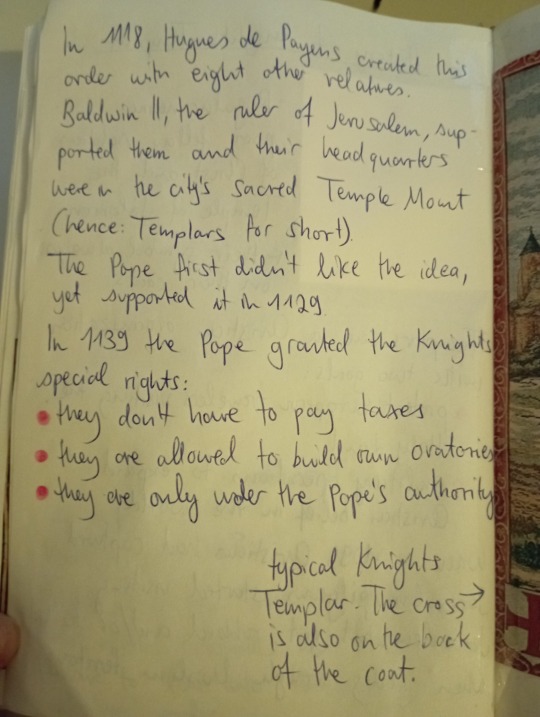

Transcript of the fifth and sixth page:
The Templars had a system almost like banks today: pilgrims could deposit any amount of money in their home cities and once reaching Jerusalem they were able to withdraw these funds- like an ATM machine. This made them also popular with regular travellers and even merchants as their wealth was secured.
As a Knight's Templar one had to follow certain rules. They were far too many and I have four pages full of them. I'll note the strangest here, you can read the others on the pictures.
there was one reason to rise earlier from the dinner table: a fire, a war cry or, strangely, nosebleeds
their clothing during times where they wouldn't go to war or outside had to be white, black or brown
not allowed were also pointy shoes (not sure if too witchy) and shoelaces (?)
they were not allowed to attack anyone despite being warrior monks unless a Christian was attacked
beards were cool when long, but long hair wasn't (too womanly)
gambling was suprisingly allowed but only with another brother with his crossbow or ten candles
Yeah don't asked me about the sense, I just distract myself from the outside world. It's good to know strange and crazy people always existed so today feels more...normal. Or at least, okay.

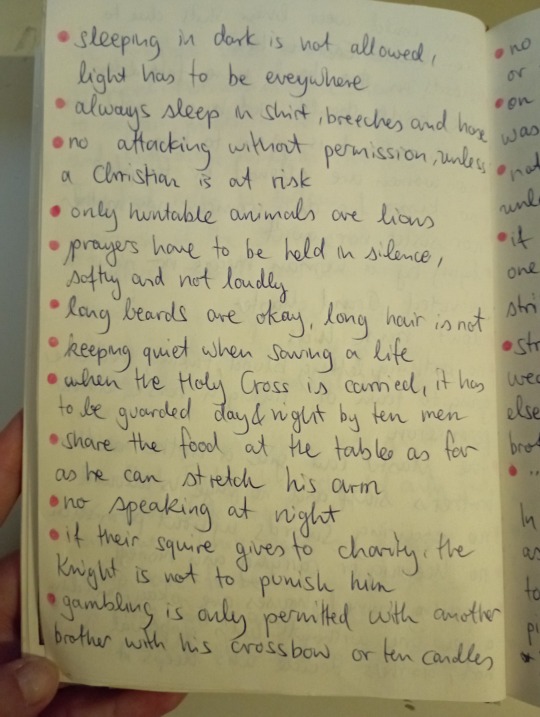
Transcript of the seventh page:
Here I have the summary on the Templars. Molay, the guy you remember, was burned with a friend on the stake and the order was dissolved in 1312. The Knight's Templars were officially gone and the Pope was anti, yet a lot of people suspected them to go underground and exist to this day. Officially, they don't, yet another group named the Freemasons revived their traditions.
Some questions arose during my research: if they really went underground, where to? Who are the Freemasons, could they be a spin-off? Or an unofficial continuation of the order?

The Freemasons were officially mentioned in 1445, that's 133 years after the Knight's Templars were wiped out. So they are not really connected or at least pretend they are not. Either way, I will look into the Freemasons now. No mention of Vasiley or Limoux. I might be even incorrect with these guys, I'm not sure. But anything is better than just listening to the radio and hearing more shops closing temporarily, more police patrolling the streets and Paris even contemplating a lockdown to protect us from the monstrum.
#tomb raider#angel of darkness#traod#classic tr#tomb raider angel of darkness#journal#aod#lara craft#tomb raider series
2 notes
·
View notes
Text
Giovanni and Chris
An imitation of the sculpture of Blessed Gerard and the Poor in Scala.
By the way, the full name of the Knights Templar is “the Poor Fellow-Soldiers of Christ and of the Temple of Solomon”.



40 notes
·
View notes